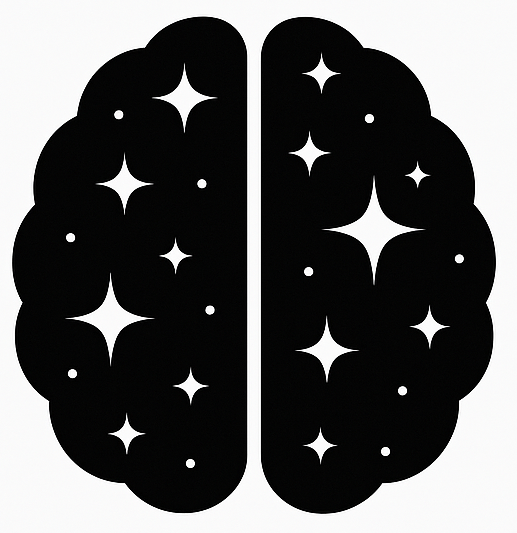There’s a growing movement encouraging neurodivergent people to “unmask.”
To be fully authentic. To stop fawning, performing, or hiding their true selves.
And on the surface, that sounds empowering.
But here’s the reality: Unmasking isn’t always safe.
And for many autistic and ADHD folks, completely dropping the mask overnight has led to job loss, isolation, relationship breakdowns, and emotional chaos.
Let’s talk honestly about masking, why it developed, and how to unmask safely and sustainably — without destabilizing your life in the process.
🧠 What Is Masking?
Masking is the act of suppressing or disguising natural neurodivergent traits in order to fit in socially, professionally, or culturally.
This might look like:
- Forcing eye contact when it’s uncomfortable
- Suppressing stims like rocking or fidgeting
- Mimicking social scripts to avoid seeming “weird”
- Hiding sensory sensitivities
- Downplaying struggles with communication or executive dysfunction
- Smiling or laughing at jokes you don’t understand
- Monitoring tone, volume, and word choice to avoid seeming “too much”
For many neurodivergent people, masking isn’t about being fake — it’s about surviving.
😔 Why Masking Develops
Masking often begins in childhood as a response to:
- Bullying or social rejection
- Punishment for “inappropriate” behaviors
- Pressure to “act normal”
- Being misunderstood or invalidated by teachers, caregivers, and peers
- Wanting to avoid shame, ridicule, or judgment
Over time, masking becomes second nature — so automatic that many people don’t even realize they’re doing it. It can lead to anxiety, burnout, and identity confusion.
But here’s where it gets complicated…
⚖️ Why Unmasking Isn’t Always the Answer
While unmasking can be freeing and healing, doing it all at once, in all environments, without a safety net can have unintended consequences:
- In the workplace: You may face discrimination, job loss, or backlash for suddenly showing traits that were previously hidden
- In relationships: People close to you might feel confused, overwhelmed, or disconnected from the “version” of you they’ve always known
- In your nervous system: Dropping all self-monitoring can lead to sensory overload, emotional dysregulation, and shutdowns — especially if you’ve been using masking to cope with overstimulation
The narrative that “all masking is bad” overlooks one important truth: some masks are protective. And sometimes, masking is the most compassionate choice for yourself.
🧭 So What’s the Middle Path?
Conscious masking. Selective unmasking. Intentional authenticity.
This is about learning when, where, and how to show up as your full self — without setting yourself on fire to prove you’re being authentic.
🔑 How to Begin Unmasking Safely
1. Start by noticing.
You can’t change what you’re not aware of. Begin tracking when you mask — and why. Is it for safety? Comfort? Approval? Habit? Fatigue?
2. Unmask in safe spaces first.
Choose relationships, communities, or environments where you know you’ll be met with understanding. Therapy is often a good place to begin.
3. Choose your moments.
You don’t have to stim in front of your boss or info-dump at a family dinner — unless you want to. You get to decide when it’s worth the emotional cost.
4. Build regulation tools alongside unmasking.
As you stop suppressing traits, you may feel more overwhelmed. You’ll need tools to help your nervous system manage the increased input — sensory aids, routines, breaks, or self-soothing practices.
5. Adjust expectations slowly.
Let close people in your life know what’s shifting for you. Help them understand that the “you” they’re seeing now was always there — just hidden.
6. Give yourself grace.
Unmasking isn’t a goalpost. It’s a lifelong dance of self-awareness, strategy, and self-compassion.
💬 You Can Be Real and Still Be Wise
Authenticity is not all-or-nothing.
You don’t owe anyone rawness that puts your safety, job, or relationships at risk.
You’re not “faking” because you choose to mask in certain settings.
You’re navigating a neurotypical world using tools you’ve learned to survive — and that’s valid.
🫶 Final Thoughts
Yes, unmasking can be liberating.
But it must be done with care, support, and choice — not pressure, shame, or one-size-fits-all advice.
You are already real. Already valid. Already worthy of rest and belonging.
If you’re navigating the complexities of masking, burnout, or figuring out who you really are beneath it all — you’re not alone. And you don’t have to do it without guidance.
I help neurodivergent adults unpack masking, build safe support systems, and create sustainable lives where authenticity doesn’t come at the cost of stability.

